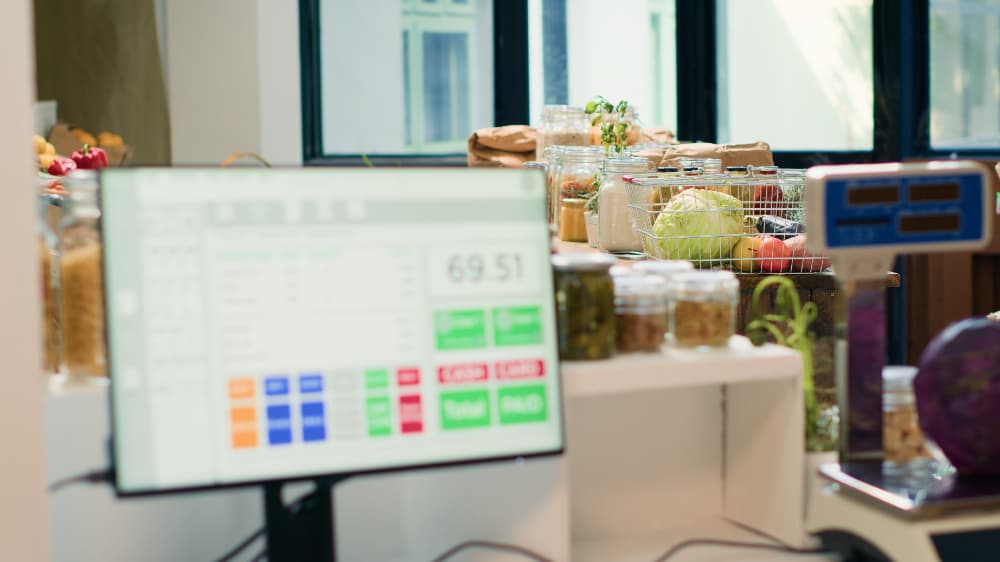Lorem ipsum dolor sit amet, consectetur adipiscing elit. Ut elit tellus, luctus nec ullamcorper mattis, pulvinar dapibus leo.Lorem ipsum dolor sit amet, consectetur adipiscing elit. Ut elit tellus, luctus nec ullamcorper mattis, pulvinar dapibus leo.Lorem ipsum dolor sit amet, consectetur adipiscing elit. Ut elit tellus, luctus nec ullamcorper mattis, pulvinar dapibus leo.Lorem ipsum dolor sit amet, consectetur adipiscing elit. Ut elit tellus, luctus nec ullamcorper mattis, pulvinar dapibus leo.Lorem ipsum dolor sit amet, consectetur adipiscing elit. Ut elit tellus, luctus nec ullamcorper mattis, pulvinar dapibus leo.
What Inventory Forecasting Is and Why It Matters
Inventory management is one of the most important ingredients for grocery store success — but it’s also one of the most challenging. If your shelves are understocked, you’ll frustrate customers and lose sales. If you overstock your store, you’ll run into cash flow, storage, and spoilage problems.
Inventory forecasting can help you strike the right balance. This approach involves analyzing your historical sales data and staying up to date on grocery industry trends, then using these insights to optimize your stocking strategy.
For example, as the winter holidays approach, you might check last year’s sales reports to see which seasonal products flew off your shelves and which lasted well into the new year. If customers cleared out your frozen hams but passed over the turkeys, you can meet their demand and cut inventory costs by ordering more pork and less poultry.
Before we dive into how to forecast inventory, let’s look at some of the benefits:
- Prevent stockouts: Accurately predicting demand helps you keep your bestsellers in stock, ensuring happy customers and consistent sales.
- Reduce waste: Inventory forecasting helps you stock just enough of your undersellers, preventing overstocking and spoilage.
- Control cash flow: Forecasting ensures you’re investing in inventory that will actually sell, keeping costs low and profits high.
- Capitalize on trends: Stand out from the competition and delight customers by forecasting inventory for trending products they can’t find anywhere else.
In short, inventory forecasting is a win-win for you and your customers. It protects your bottom line and ensures your customers can always find what they want in your grocery store.
How To Forecast Inventory in 4 Steps
Now that we’ve covered why inventory forecasting matters, let’s dive into how to do it. Here are four steps to understanding your customers’ shopping behaviors, spotting trends, and taking a flexible approach to stocking your store.
1. Invest in the Right Tools
First, let’s make sure you have the right tools for the job — most importantly, a grocery store point of sale (POS) system.
The right POS system is so much more than a simple cash register. It’s an inventory management powerhouse that tracks your stock levels, reveals emerging sales trends, and provides valuable insights into your shoppers’ wants and needs.
Recording and analyzing this data by hand is a nearly impossible task, so you need a grocery POS system with advanced inventory management and reporting capabilities.
Related Read: How To Find a Grocery Store POS System [6 Top Providers]
2. Dig Into Your Sales Reports
To predict the future, you need to understand the past. Put another way, analyzing your historical sales data is crucial when learning how to forecast inventory.
Frequently reviewing your sales reports will help you identify patterns in customers’ shopping behaviors and product performance — both of which should influence your approach to stocking.
Here are a few examples of trends to look for in your sales reports:
- Bestselling products: Are sales of a particular product growing? Stock more of it to keep up with demand.
- Underperforming products: Is a certain product collecting dust on your shelves? Consider stocking less or discontinuing it.
- Seasonal shifts: Add context to your sales reports by paying attention to seasonal changes and holidays.
- Overall sales spikes and valleys: Is your store busiest toward the beginning of the week? Schedule a larger inventory delivery earlier in the week, then a smaller one later to fill in the gaps.
Knowing what customers purchase, when they purchase it, and how their shopping habits fluctuate over time will help you make more informed decisions about your grocery store’s inventory selection and quantity.
3. Stay on Top of Trends
A successful approach to inventory forecasting goes beyond understanding your customers; you also need to stay on top of broader trends emerging in the grocery world. Subscribe to industry magazines and newsletters, browse social media, and visit your competitors to stay informed.
Check out these examples of current grocery trends, plus how to capitalize on them:
- Better-for-you options: Customers are more invested in their health and wellness than ever, so experiment with stocking more organic produce, lean meats, and high-protein snacks.
- Sustainable shopping: Cater to environmentally-conscious shoppers by increasing your stock of local, farm-fresh meats and produce.
- Creative snacking: Excite flavor-chasing customers by expanding your selection of sweet, spicy, and sour treats.
These are just a few examples of how keeping up with your customers’ interests and preferences will help you stay relevant and competitive.
4. Stay Flexible and Adaptable
Grocery inventory forecasting is far from a “set it and forget it” type of task.
Changing trends, supply chain interruptions, and shifting shopping habits will all impact your inventory turnover rates. To protect your bottom line, you need to stay informed and flexible, taking action to optimize your inventory before stockouts or spoilage strike.
Here are a few tips to craft a dynamic approach to forecasting inventory:
- Since accurate forecasting depends on accurate inventory records, follow best practices like barcode labeling and regular cycle counts.
- Schedule a regular time to review your sales reports and research emerging grocery store trends.
- Build strong relationships with your suppliers and ask them to keep you informed about any supply chain issues.
- Start your seasonal inventory planning as early as possible.
- Use promotions strategically to increase turnover for near-expiry products or to highlight new, trendy arrivals.







